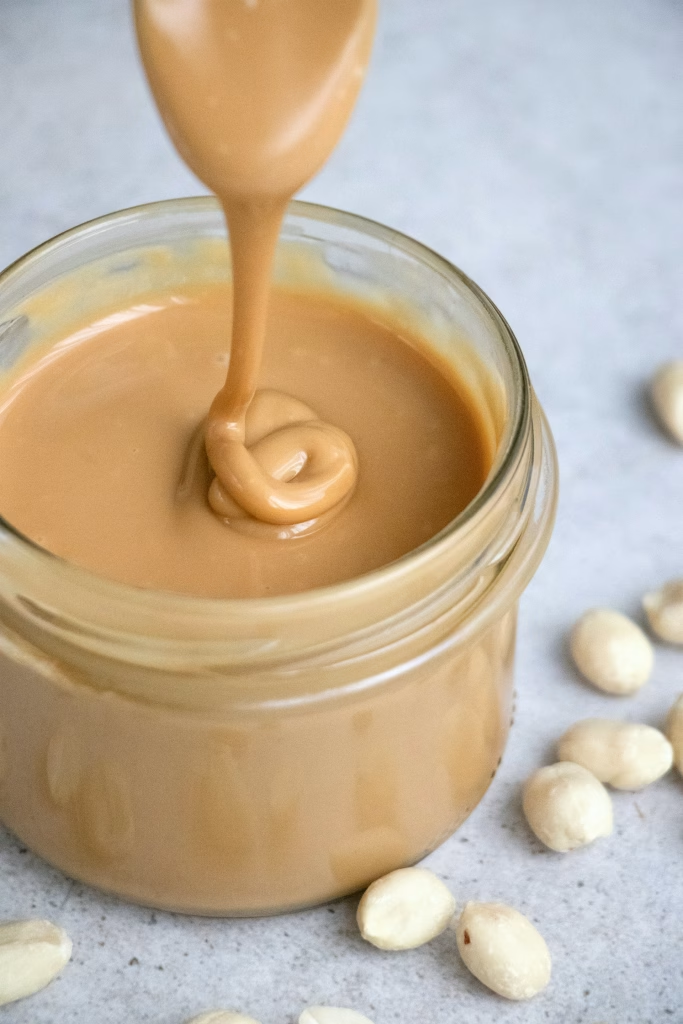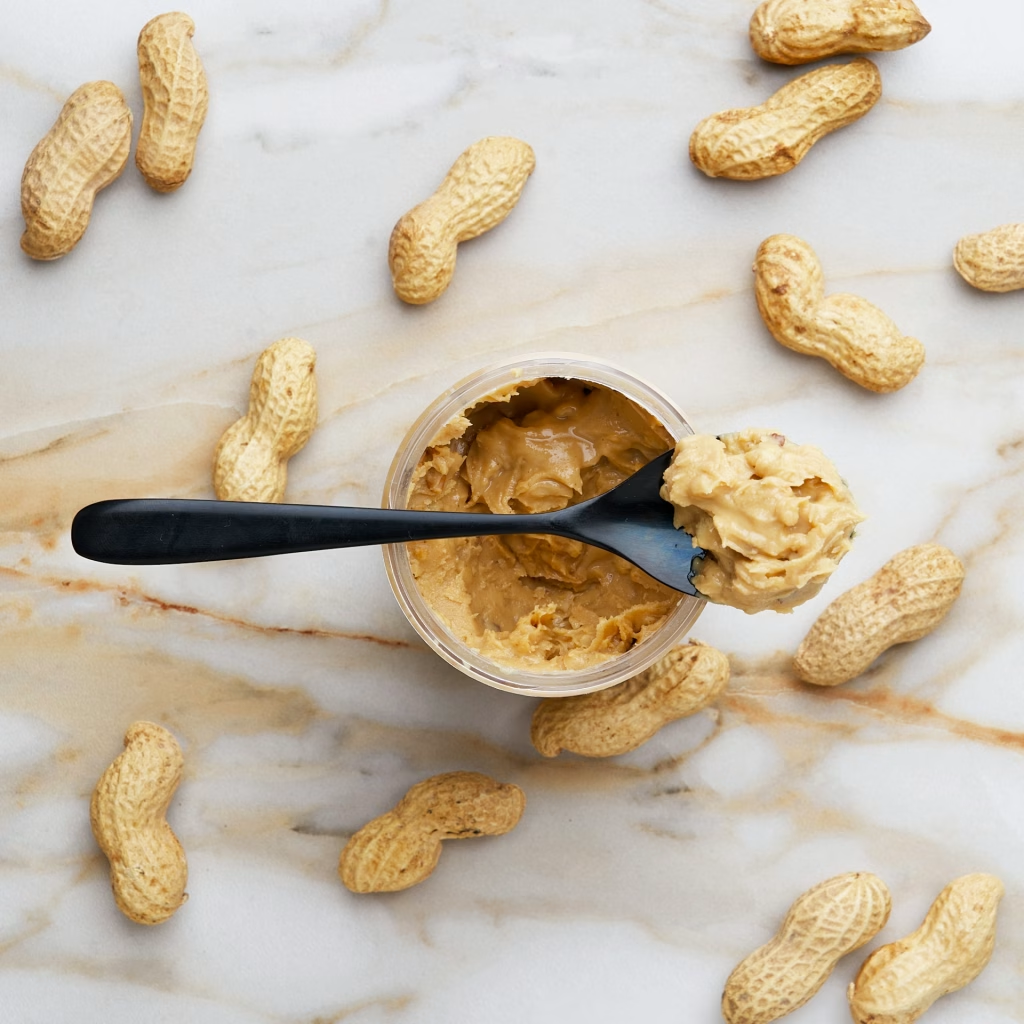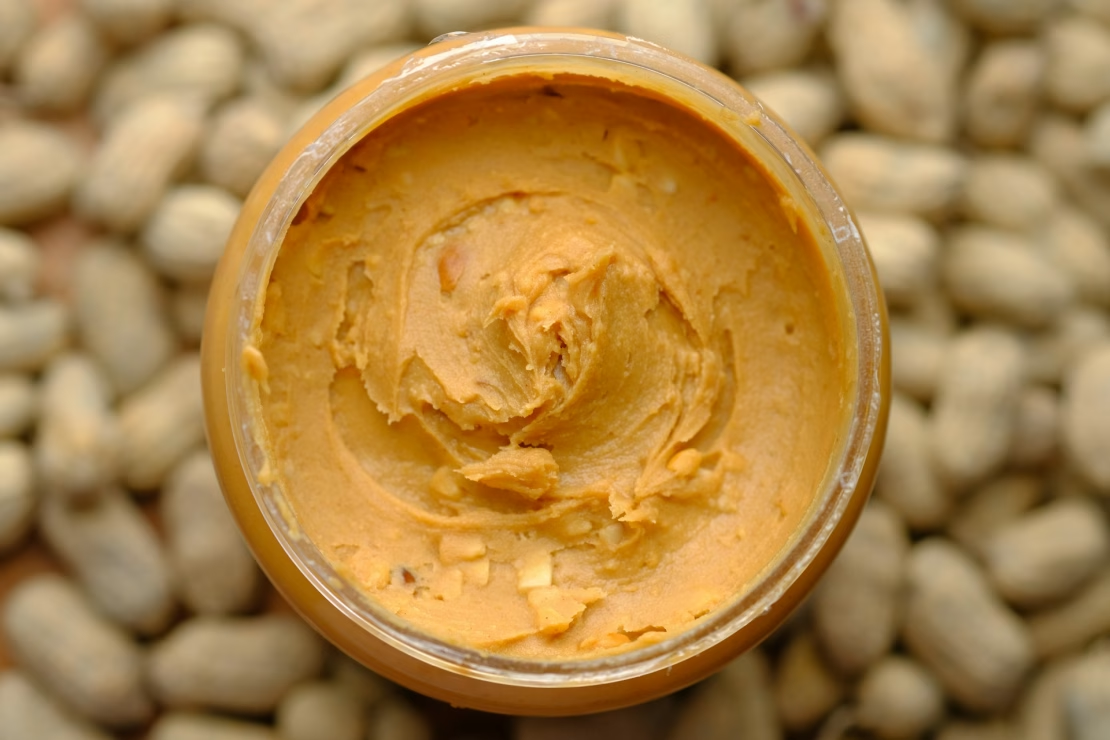Homemade salted peanut butter is a delightful treat that combines the rich, nutty flavor of roasted peanuts with a hint of saltiness.
This simple recipe allows you to create a creamy and delicious spread that’s perfect for sandwiches, snacks, or adding a unique twist to your favorite recipes. With minimal effort and ingredients, you can enjoy the satisfaction of creating your own homemade peanut butter that’s free from preservatives and additives.
Table of Contents
Ingredients:
- 2 cups of peanuts (raw, unsalted)
- 1/2-1 teaspoon of salt (to taste)
Step by Step Instructions
Roast the peanuts:
Method 1 – With an Oven
- Preheat your oven to 350°F (175°C). Spread the peanuts out on a baking sheet and roast for 10-12 minutes until the skin turns slightly darker and emit a rich, nutty aroma. Be sure to stir or shake the tray a couple of times to ensure even roasting. Taste one to check for doneness. The skins may start to crack open, and the peanuts should be crunchy. Allow the peanuts to cool and remove the skins.
Method 2 – With a Pan
- Heat a heavy-bottomed skillet or frying pan over medium heat. Add the raw peanuts in a single layer and stir them frequently to prevent burning. Roast the peanuts for about 10-15 minutes until they turn slightly darker and become fragrant. Remove the pan from the heat and let the peanuts cool down a bit and remove the skins.
Process the peanuts: Place the cooled peanuts in a food processor or high-speed blender. Process for 1 minute. At this point, the peanuts should be finely ground. If necessary, scrape down the sides of the food processor or blender with a spatula.
Continue processing: Run the food processor or blender for another 2-3 minutes until the peanut butter is as smooth as you’d like it. You may need to stop a few times to scrape the sides. During this time, the friction will heat the peanuts, which can help in the process of releasing their natural oils.
Add salt: Add the salt and process again until everything is well combined and the peanut butter is smooth.
Store: Store the peanut butter in an airtight container in the fridge. It should last for up to 2 months.
Enjoy your homemade peanut butter on toast, in sandwiches, or in your favorite recipes!

Tips
- Choose Quality Peanuts: Use high-quality, roasted peanuts for the best flavor and texture. You can opt for unsalted peanuts if you prefer to control the saltiness of your peanut butter.
- Roast Your Own Peanuts: If you have raw peanuts, consider roasting them yourself for a fresher flavor. Simply spread the peanuts on a baking sheet and roast them in the oven at 350°F (175°C) for 10-15 minutes, stirring occasionally, until they’re golden brown and fragrant.
- Add Salt Gradually: Start with a small amount of salt and adjust to taste. Remember, you can always add more salt later if needed, but you can’t remove it once it’s mixed in.
- Texture Control: Blend the peanuts for a shorter time for a chunkier peanut butter or longer for a smoother consistency. Experiment with different blending times to achieve your desired texture.
- Storage: Store your homemade peanut butter in an airtight container in the refrigerator to maintain freshness. It can last for several weeks, but be sure to check for any signs of spoilage before consuming.
Variations
- Honey Roasted Peanut Butter: Add a touch of sweetness by mixing in honey during the blending process.
- Chocolate Peanut Butter: Stir in cocoa powder or melted chocolate for a decadent chocolate-flavored peanut butter.
- Spicy Peanut Butter: For a kick of heat, mix in some chili powder or cayenne pepper.
- Nutty Crunch: Add chopped nuts such as almonds, cashews, or pecans for added texture and flavor.
History of Peanut Butter
Peanut butter has been enjoyed for centuries, with evidence of its existence dating back to the Aztecs and Incas who ground roasted peanuts into a paste.
However, it wasn’t until the late 19th century that peanut butter as we know it today began to emerge in the United States. In 1884, Marcellus Gilmore Edson, a Canadian chemist, patented the first process for producing peanut paste, which laid the groundwork for the commercial peanut butter industry.

By the early 20th century, peanut butter had become a popular food item, particularly in the United States, where it was initially considered a delicacy enjoyed by the wealthy. However, with advancements in food processing technology and the introduction of mass production methods, peanut butter became more affordable and accessible to the general public.
Today, peanut butter is enjoyed worldwide in various forms and flavors, with homemade versions gaining popularity due to their simplicity and customizability.
FAQs (Frequently Asked Questions) about Peanut Butter
- Can I use raw peanuts instead of roasted peanuts? While you can use raw peanuts, roasting them beforehand enhances their flavor. If using raw peanuts, consider roasting them yourself before making the peanut butter.
- Can I use unsalted peanuts? Yes, you can use unsalted peanuts if you prefer to control the saltiness of your peanut butter. Simply adjust the amount of salt to your taste.
- How long does homemade peanut butter last? Homemade peanut butter can last for several weeks when stored in an airtight container in the refrigerator. Be sure to check for any signs of spoilage before consuming.
- Can I customize the flavor of my peanut butter? Absolutely! You can customize your peanut butter by adding ingredients such as honey, chocolate, spices, or additional nuts to create unique flavor combinations.
- Can I use a blender instead of a food processor? Yes, a blender can be used to make peanut butter, but you may need to scrape down the sides more frequently to ensure even blending. Additionally, be cautious not to overheat the blender motor.


